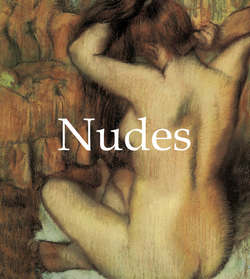Читать книгу Nudes - Jp. A. Calosse - Страница 3
Lucas Cranach the Elder (1472–1553)
ОглавлениеTrue knightly love could have nothing in common with the desire to possess a woman. The knight was a vassal to the lady of his heart. His love took the form of selfless fidelity, self-sacrificing service and courteous attentions. This ideal of elevated love was contrasted with base love – a blind, consuming passion and elementary satisfaction of lust. Love was a trial on the knight’s path to moral perfection between the poles of virtue and vice.
Danäe
Rembrandt, 1636
oil on canvas, 158 × 202.5 cm
The Hermitage Museum, St Petersburg
Every step took him and his chosen lady closer to salvation or perdition of the soul, to paradise or to hell.
That, in brief, was the code of courtly love in its German interpretation. That strict, elegant ethic did not, however accord with marital morals which are founded not on the separation of the spiritual and the sensual but on a life-creating harmony of the two. In the family, common sense reigns supreme: moderation is more important than anything!
Venus and Cupid (The Rokeby Venus)
Diego Velázquez, 1649–1651
oil on canvas, 122.5 × 177 cm
National Gallery, London
From this point of view both extremes in love – abstention and intemperance – are equally unfitting. Eve, Delilah, Bathsheba, Solomon’s concubines, Judith, Salome, Venus, Diana, Omphale, Phyllis, Lucretia, young women exploiting besotted old men – they all warned men against losing their reason to feminine charms. Cranach was the first German artist to introduce this theme into easel painting.
Hercules and Omphale
François Boucher, 1730s
oil on canvas, 90 × 74 cm
Pushkin Museum of Fine Arts, Moscow
The preaching element was apparently still present, but an easel painting is an object of a special kind. If it is good enough, then a person looking at it forgets about the outside world. Cranach detected the appreciation forming in those around him for that sort of sweet self-deception and began creating artistic forms.
The Birth of Venus
Noël-Nicolas Coypel, 1732
oil on canvas, 81 × 65 cm
The Hermitage Museum, St Petersburg
In the extended landscape format, the nymph’s body, like an obstacle on the way to the spring, is stretched out on the very edge, so close that there is no hope of moving away unnoticed. The maiden is waking, aware of the eyes fixed upon her; their owner, forgetting about the spring, has crept up to the sleeping beauty and is bending over her. Comparing the paintings with the drawing, we recognize that in the painted variants Cranach insistently foists two illusions on the viewer.
Odalisque
François Boucher, 1743
oil on canvas, 53 × 64 cm
Musée du Louvre, Paris
The first is that he is looking at the nymph as if kneeling in front of her, when the gaze is barely distinguishable from a fondling touch. The second is that her body is anything but still. It is delineated by wavy, slipping contours as if it were resting not on the ground but in some unstable medium, the invisible shifts of which, supporting the body in weightlessness, evoke barely noticeable counter-reactions in it.
Конец ознакомительного фрагмента. Купить книгу
